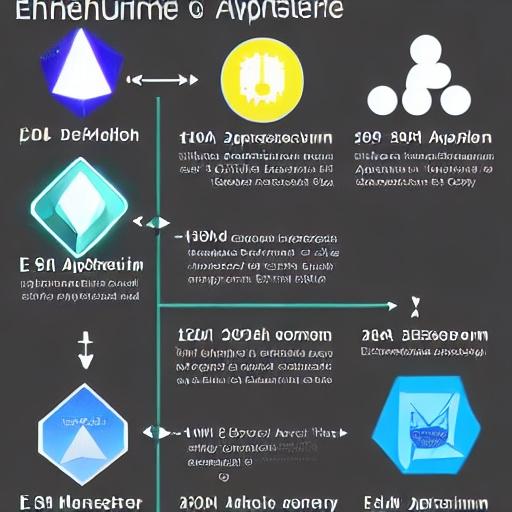Have you ever wondered how Ethereum, the world’s second-largest cryptocurrency, came into existence? To understand Ethereum’s origin story, we must delve into the fascinating history of blockchain technology.
Blockchain technology emerged in 2008, introduced to the world by a pseudonymous individual or group known as Satoshi Nakamoto, who also created Bitcoin. Nakamoto conceived blockchain as a decentralized ledger that could record transactions securely and transparently, eliminating the need for intermediaries such as banks.
Inspired by Nakamoto’s vision, a young programmer named Vitalik Buterin started exploring the possibilities of blockchain technology beyond just digital currency. Buterin envisioned a blockchain platform that could support decentralized applications (dapps) and smart contracts, which are self-executing agreements with predefined conditions.
In late 2013, Buterin published a whitepaper titled “Ethereum: A Next-Generation Smart Contract and Decentralized Application Platform.” The paper detailed his groundbreaking ideas for what would later become Ethereum, outlining the architecture, consensus mechanism, and decentralized nature of the platform.

Ethereum’s core innovation was the introduction of the “Ethereum Virtual Machine” (EVM). The EVM is a decentralized, Turing-complete virtual machine that executes smart contracts and runs dapps on the Ethereum network. This virtual machine allows developers to write code in various programming languages and deploy it on the Ethereum blockchain.
Buterin’s whitepaper caught the attention of several prominent figures in the industry, including computer scientist Dr. Gavin Wood. Wood recognized the potential of Ethereum and collaborated with Buterin to develop the platform further. Together, they co-founded Ethereum in late 2013, with Buterin serving as the project’s face and Wood taking on a technical leadership role.
The Ethereum team attracted significant attention and support, leading to a successful crowdfunding campaign in July 2014. During this campaign, Ethereum raised over $18 million by selling Ether (ETH), the platform’s native cryptocurrency.
In July 2015, Ethereum went live with its first major release known as “Frontier.” This marked the beginning of Ethereum’s mainnet, allowing developers and users to access the network and build decentralized applications. The release of Ethereum’s mainnet was a pivotal moment, as it showcased the potential of blockchain technology beyond Bitcoin.
Ethereum’s popularity skyrocketed, with developers and entrepreneurs worldwide recognizing the platform’s immense possibilities. The flexible and programmable nature of Ethereum’s blockchain enabled the creation of numerous innovative projects and decentralized services.
Since Ethereum’s launch, it has undergone several major upgrades to enhance scalability, security, and functionality. Notable upgrades include the Homestead, Metropolis, and Constantinople hard forks, each introducing improvements and new features to the Ethereum network.
Today, Ethereum continues to thrive, hosting thousands of decentralized applications and playing a vital role in the rapidly expanding world of decentralized finance (DeFi) and non-fungible tokens (NFTs). Its versatility, coupled with a thriving developer community and growing adoption, has solidified Ethereum’s position as one of the most influential and widely used blockchain platforms.
